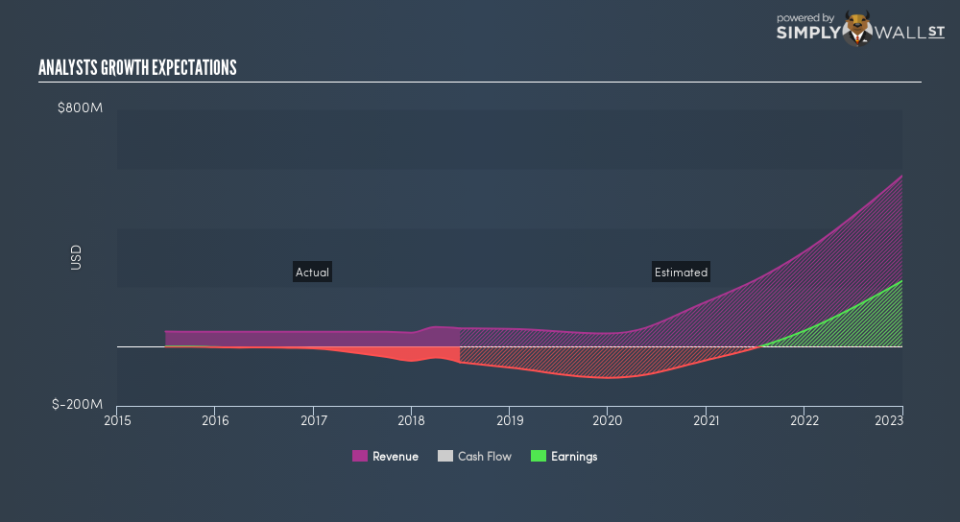Who Just Ramped Up Their Shares In Reata Pharmaceuticals Inc (NASDAQ:RETA)?

Reata Pharmaceuticals, Inc., a clinical stage biopharmaceutical company, focuses on identifying, developing, and commercializing therapeutics to address serious and life-threatening diseases with therapies by targeting molecular pathways that regulate cellular metabolism and inflammation. Reata Pharmaceuticals’s insiders have invested 888.00 shares in the large-cap stocks within the past three months. Generally, insiders buying more shares in their own firm sends a bullish signal. A two-decade research published in The MIT Press (1998) showed that stocks following insider buying outperformed the market by 4.5%. However, these signals may not be enough to gain conviction on whether to invest. Today we will evaluate whether these decisions are bolstered by analysts’ expectations of future growth as well as recent share price movements.
View our latest analysis for Reata Pharmaceuticals
Who Are Ramping Up Their Shares?
Over the past three months, more shares have been bought than sold by Reata Pharmaceuticals’s’ insiders. In total, individual insiders own over 4.8 million shares in the business, which makes up around 16.16% of total shares outstanding.
The insider that recently bought more shares is James Bass (board member) .
Is Future Growth Outlook As Bullish?
Analysts’ expectations for earnings over the next 3 years of 98.9% provides an exceptional outlook for the business which is consistent with the signal company insiders are sending with their net buying activity.
Delving deeper into the line items, analysts anticipate decline in top-line growth next year, which could imply some headwinds going forward. This is expected to impact its bottom line next year given the large negative growth rate expected, indicating cost-cutting may not be able to pull it through into a positive growth region yet.
However, company insiders appear to know something the market doesn’t and have been investing more money into the stock. This may mean they believe in a turnaround or believe the stock is well-undervalued by negative market sentiment.
Did Stock Price Volatility Instigate Buying?
Alternatively, the timing of these insider transactions may have been driven by share price volatility. Volatility provides an opportunity to trade on market inefficiencies when the stock is under-priced compared to the stock’s intrinsic value.
In the past three months, Reata Pharmaceuticals’s share price reached a high of $92.06 and a low of $34.97. This indicates a significant level of volatility in share price with a change of 163.25%.
Insiders could perceive this meaningful movement as an opportunity to accumulate their shareholdings.
Next Steps:
Reata Pharmaceuticals’s net buying tells us the stock is in favour with some insiders, though negative growth in expected earnings contests this assumption, whereas a highly volatile share price could be the driver to buy. Although insider buying can be a useful prompt, following the lead of an insider, however, will never replace diligent research. there are two fundamental factors you should further examine:
Financial Health: Does Reata Pharmaceuticals have a healthy balance sheet? Take a look at our free balance sheet analysis with six simple checks on key factors like leverage and risk.
Other High Quality Alternatives : Are there other high quality stocks you could be holding instead of Reata Pharmaceuticals? Explore our interactive list of high quality stocks to get an idea of what else is out there you may be missing!
NB: Figures in this article are calculated using data from the last twelve months, which refer to the 12-month period ending on the last date of the month the financial statement is dated. This may not be consistent with full year annual report figures.
To help readers see past the short term volatility of the financial market, we aim to bring you a long-term focused research analysis purely driven by fundamental data. Note that our analysis does not factor in the latest price-sensitive company announcements.
The author is an independent contributor and at the time of publication had no position in the stocks mentioned. For errors that warrant correction please contact the editor at editorial-team@simplywallst.com.

 Yahoo Finance
Yahoo Finance 

